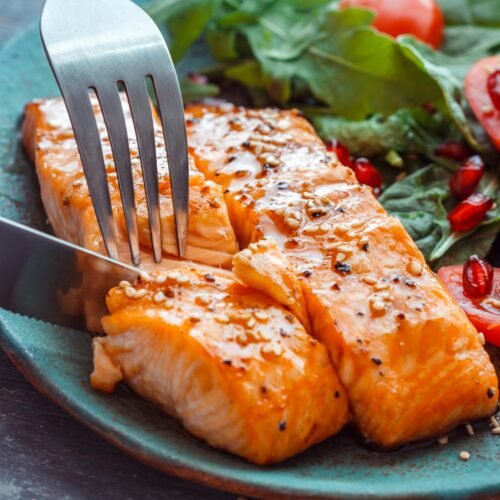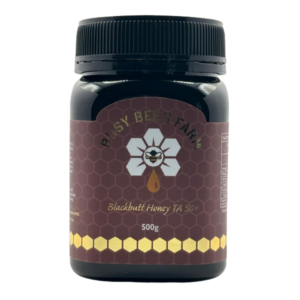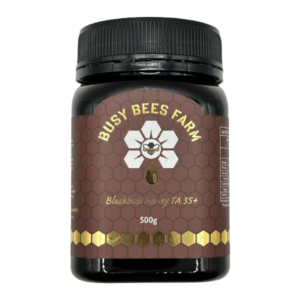
In recent years, honey-glazed salmon has emerged as a delectable choice for seafood enthusiasts and home cooks alike. This dish stands out not only for its rich flavor profile but also for its health benefits, appealing to a wide range of dietary preferences. With its unique balance of sweetness from the honey and the savory notes of the salmon, it creates a harmonious blend that excites the palate.
The versatility of honey-glazed salmon is one of its most attractive features. It can be prepared in various ways, including grilling, broiling, baking, or pan-searing. Each cooking method brings out different textures and flavors, allowing for customization based on individual preferences or seasonal ingredients. This adaptability makes it suitable for both casual family dinners and elegant gatherings, further contributing to its rising popularity among culinary circles.
Moreover, honey-glazed salmon can easily be paired with a variety of side dishes. Whether served alongside roasted vegetables, fresh salads, or fragrant rice, the dish complements an array of accompaniments, enhancing the overall dining experience. This flexibility enables home cooks to experiment with different flavor combinations, showcasing the adaptability of salmon as a protein of choice.
Another factor contributing to the appeal of honey-glazed salmon is its nutritional profile. Salmon is renowned for its high omega-3 fatty acid content, which is beneficial for heart health and cognitive function. When combined with the natural sweetness of honey, which offers antioxidants and has potential health benefits, this dish not only satisfies cravings but also promotes well-being.
As we delve deeper into the world of honey-glazed salmon, it becomes clear that this dish is a perfect representation of the union between health and flavor. Its increasing popularity is a testament to its ability to cater to diverse culinary needs while delivering an unforgettable taste experience.
Salmon is widely recognized for its impressive nutritional profile, primarily due to its high content of omega-3 fatty acids, which are essential for maintaining optimal health. These fatty acids, specifically eicosapentaenoic acid (EPA) and docosahexaenoic acid (DHA), are known for their anti-inflammatory properties and are linked to a reduced risk of chronic diseases. Incorporating salmon into your diet can contribute to improved heart health by lowering blood pressure, reducing triglycerides, and enhancing overall cardiovascular function.
Moreover, salmon is an excellent source of protein, which plays a crucial role in muscle development, repair, and overall body function. A single serving of salmon can provide a substantial portion of the daily recommended protein intake, making it an ideal option for individuals looking to maintain lean muscle mass or boost their protein consumption. This high protein content also promotes satiety, which can aid in weight management by preventing overeating.
In addition to omega-3 fatty acids and protein, salmon is rich in various essential vitamins and minerals. It contains significant amounts of vitamin B12, which is vital for nerve functioning and the production of red blood cells. Salmon is also a good source of vitamin D, which supports bone health and enhances immune function. Furthermore, the selenium present in salmon may help protect against oxidative damage and support thyroid function.
Including honey-glazed salmon in your meals not only amplifies its health benefits but also adds a delightful taste that appeals to a wide range of palates. The natural sweetness of honey complements the richness of the salmon, making it a flavorful and nutritious choice for promoting overall health and well-being.
When it comes to preparing honey-glazed salmon, selecting the right type of salmon is crucial for achieving the best flavor and quality. Salmon can typically be divided into two main categories: wild-caught and farmed. Each has its own unique attributes, making them suitable for different preferences and culinary applications.
Wild-caught salmon generally boasts a richer flavor and firmer texture compared to its farmed counterpart. This is largely due to the fish’s natural diet and active lifestyle in their natural habitat. Species such as Chinook, Coho, and Sockeye are popular varieties of wild salmon, known for their vibrant color and superior taste. However, wild-caught options can be more expensive and less available depending on the season and sustainability practices.
Farmed salmon, on the other hand, is more accessible and tends to be more affordable. Species like Atlantic salmon are commonly farmed and can provide a mild flavor that many diners appreciate. While farmed salmon may lack some of the nuances of wild-caught options, advancements in aquaculture have led to improvements in taste and quality. When choosing farmed salmon, it is essential to look for sources that adhere to responsible farming practices.
Regardless of the type chosen, freshness is key when selecting salmon. Look for bright, shiny skin and moist flesh. The fish should have a pleasant ocean scent rather than a strong fishy odor. When possible, inquire about the sourcing of the salmon, opting for sustainable options that do not compromise environmental health. Certifications from organizations like the Marine Stewardship Council (MSC) or the Aquaculture Stewardship Council (ASC) can guide consumers toward more ethical choices.
To create the delectable honey-glazed salmon, one must gather a selection of essential ingredients that work harmoniously to elevate the natural flavors of the fish. At the heart of this recipe lies honey, which provides the signature sweetness and a delightful sticky texture when cooked. Opt for quality, pure honey to achieve the best results; variations such as wildflower or clover honey can impart unique flavors.
Next, soy sauce plays a crucial role in adding depth and umami to the dish. Both regular and low-sodium soy sauce are viable options, allowing for versatility based on personal preference or dietary needs. Minced garlic enhances the overall flavor profile, bringing aromatic qualities that complement the sweetness of the honey and the saltiness of the soy sauce.
In addition to these key components, consider including freshly squeezed lemon juice. The acidity of the lemon balances the sweetness and richness of the honey, providing a well-rounded taste experience. For those who enjoy a little heat, a touch of red pepper flakes can be added for a subtle kick. Alternatively, ginger, whether fresh or ground, can introduce an additional layer of flavor complexity.
Notably, optional enhancers such as sesame oil or Dijon mustard can add a distinctive twist to the glaze. Sesame oil contributes a nutty aroma, while mustard lends a slight tang, both of which enhance the overall taste of the dish. When preparing this recipe, it is also important to consider dietary restrictions; thus, gluten-free soy sauce can be substituted for those with gluten intolerance.
In summary, the primary ingredients for honey-glazed salmon include honey, soy sauce, minced garlic, and optional flavor enhancers such as lemon juice or ginger. The careful selection and combination of these ingredients will set the foundation for a truly delicious dish that is both satisfying and easy to prepare.
Preparing honey-glazed salmon is a straightforward process that promises delectable results. Begin by selecting high-quality salmon fillets, ensuring they are fresh and free from blemishes. The first step in achieving the perfect flavor is marinating the fish. In a bowl, combine honey, soy sauce, minced garlic, and a touch of black pepper to create a tangy marinade. Place the salmon fillets in a shallow dish or a resealable plastic bag, pouring the marinade over them. Allow the salmon to marinate for at least 30 minutes; this will enhance the flavor and tenderize the fish.
Once marinated, you can choose from various cooking methods such as baking, grilling, or pan-searing. For baking, preheat your oven to 375°F (190°C). Line a baking sheet with parchment paper for easy cleanup, then place the marinated salmon on the sheet. Bake the fish for about 15-20 minutes or until it easily flakes with a fork. Meanwhile, for grilling, preheat your grill to medium-high heat. Brush the grill grates with oil to prevent sticking, then place the salmon directly on the grill. Cook for approximately 6-8 minutes per side, ensuring a nice char while keeping the salmon moist.
If you prefer the pan-searing method, heat a non-stick skillet over medium heat and add a tablespoon of olive oil. Once the oil is shimmering, carefully lay the salmon fillets in the pan, skin-side down. Cook for 4-5 minutes, then flip and cook for an additional 4-5 minutes until the fillets are golden brown and cooked through. Regardless of the method chosen, the honey glaze will caramelize beautifully, intensifying the flavors of the salmon for a delightful dining experience.
Once cooked, allow the salmon to rest for a few minutes before serving. This ensures that the juices redistribute, resulting in a moist and flavorful dish. Complement the honey-glazed salmon with seasonal vegetables or a fresh salad for a well-rounded meal.
When it comes to preparing honey-glazed salmon, the choice of cooking technique significantly impacts both flavor and texture. Two popular methods often discussed are grilling and baking, each offering distinct advantages and potential drawbacks that can cater to different preferences.
Grilling is a favored option for many culinary enthusiasts due to the heightened flavors it imparts. This method involves cooking the salmon over an open flame or on a grill pan, allowing the natural sugars in the honey glaze to caramelize beautifully. The result is often a slightly crispy exterior while retaining moisture inside, creating a delightful contrast of textures. However, grilling requires attention to avoid overcooking, as the high heat can lead to dry salmon if left unattended. Moreover, mastery over the grill is essential to achieve the desired doneness, especially when working with delicate fish.
Baking, on the other hand, provides a more controlled cooking environment. This method involves placing the honey-glazed salmon in an oven where the heat circulates evenly. One of the main benefits of baking is its ability to infuse the fish with flavor, allowing the honey glaze to penetrate deeper into the flesh. Baking also serves as a healthier option since it does not require additional fats compared to grilling. Nonetheless, while this technique is generally easier, it can lack the smoky flavor that grilling imparts. Furthermore, baking may take longer, which can be a consideration for those short on time.
Ultimately, the decision between grilling and baking honey-glazed salmon boils down to personal preference. Each method has its unique characteristics that appeal to different palates. By understanding the pros and cons of each cooking technique, readers can make informed choices tailored to their culinary tastes.
When it comes to enhancing the delightful flavors of honey-glazed salmon, the right serving suggestions and pairings can elevate the dining experience remarkably. This versatile dish pairs beautifully with a variety of sides that complement its sweet and savory profile. One excellent option is to serve the salmon alongside roasted vegetables. Seasonal vegetables like asparagus, zucchini, and bell peppers, lightly seasoned with olive oil and herbs, not only provide vibrant colors but also add a nutritious element to the meal.
For those looking to include a starch, rice dishes work exceptionally well with honey-glazed salmon. Options such as jasmine rice or quinoa can absorb the flavors of the glaze while providing a fluffy texture. Incorporating fresh herbs or a hint of citrus zest into the rice can add another layer of flavor that harmonizes with the fish. Likewise, potato dishes, particularly garlic mashed potatoes or herb-roasted fingerlings, can create a satisfying contrast with the richness of the salmon.
Furthermore, a crisp salad can serve as a refreshing counterpart to the honey-infused salmon. A mixed greens salad with slices of avocado, cherry tomatoes, and a light vinaigrette can balance the sweetness of the fish. Alternatively, a pear and walnut salad drizzled with a honey mustard dressing can echo the flavors in the dish and enrich the overall taste experience.
To further enhance your meal, wine pairings should not be overlooked. A crisp Sauvignon Blanc or a fruit-forward Pinot Noir are both excellent choices that can complement the sweetness of the glaze, while their acidity cuts through the richness of the salmon. These suggestions not only create a well-rounded meal but also ensure that each element enhances the enjoyment of honey-glazed salmon, making it truly memorable.
Properly storing leftover honey-glazed salmon is crucial to maintaining its flavor and texture. To ensure that your salmon stays fresh, it is recommended to refrigerate it within two hours of cooking. First, allow the salmon to cool down to room temperature, then wrap it tightly in plastic wrap or aluminum foil. Alternatively, you can place it in an airtight container. When stored this way, the honey-glazed salmon can last in the refrigerator for up to three days.
If you have more leftovers than you can consume within three days, consider freezing some portions. To freeze your honey-glazed salmon, make sure it is well-wrapped to prevent freezer burn. Use freezer-safe plastic bags or containers, and remove as much air as possible to enhance preservation. When properly stored in the freezer, the honey-glazed salmon can last for up to three months without significant loss of flavor or quality.
When it comes time to reheat your leftovers, it is essential to do so carefully to maintain the delicate balance of flavors. The best method for reheating honey-glazed salmon is to use the oven. Preheat your oven to 275°F (135°C), place the salmon on a baking sheet lined with parchment paper, and heat it for approximately 10 to 15 minutes. This low-temperature method helps prevent the salmon from drying out while allowing the honey glaze to remain deliciously intact.
Another option for reheating is using a microwave. However, be cautious, as the microwave can easily overcook the fish. If you choose this method, place the salmon on a microwave-safe plate, cover it loosely with a damp paper towel, and heat it in short intervals of 30 seconds. Check frequently to ensure your honey-glazed salmon retains its moisture and flavor. Reheating leftovers can bring enjoyment, maintaining the delightful experience of dining on honey-glazed salmon.
Honey-glazed salmon is not only a culinary delight but also a dish packed with numerous health benefits. Throughout this guide, we have examined the various aspects of preparing this flavorful meal, from selecting the finest quality salmon to the perfect honey glaze that elevates its taste. Salmon is an excellent source of omega-3 fatty acids, which promote heart health, reduce inflammation, and contribute to overall well-being. Coupled with the natural sweetness of honey, this dish becomes a delectable option for any occasion.
This versatile recipe allows for customization, enabling individuals to explore different flavor profiles by incorporating herbs, spices, or even citrus elements. The balance of sweet and savory ensures that honey-glazed salmon is not only appealing to the palate but also aesthetically pleasing, making it suitable for both family dinners and entertaining guests. The simplicity of preparation—cooking in an oven or on the grill—makes it accessible, regardless of cooking skill level.
We encourage readers to try their hand at this easy yet luxurious dish. By experimenting with different accompaniments, such as roasted vegetables or a fresh salad, you can create a well-rounded meal that is both satisfying and nutritious. Making this recipe your own not only fosters a deeper appreciation for the flavors involved but also allows you to embrace creativity in the kitchen.
In summary, honey-glazed salmon is an ideal option for those seeking a delicious, healthy meal. Its numerous benefits and ease of preparation make it a perfect addition to one’s culinary repertoire. We hope you will enjoy crafting this dish as much as we do, and that it becomes a favorite in your household, celebrating both taste and health in every bite.











